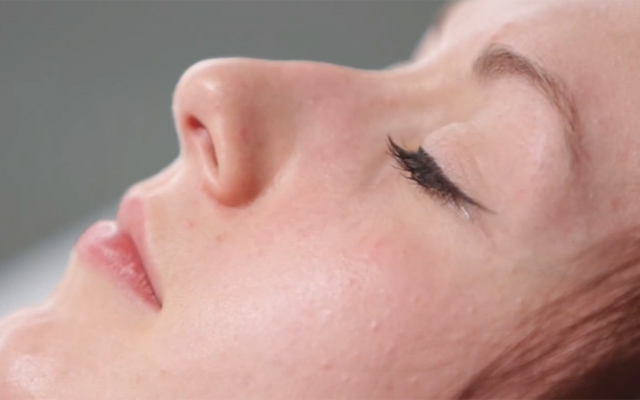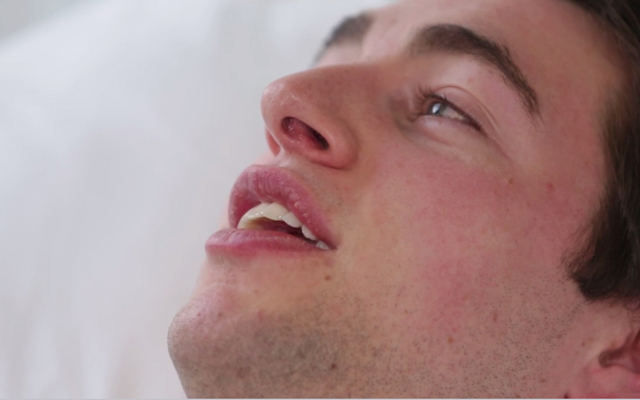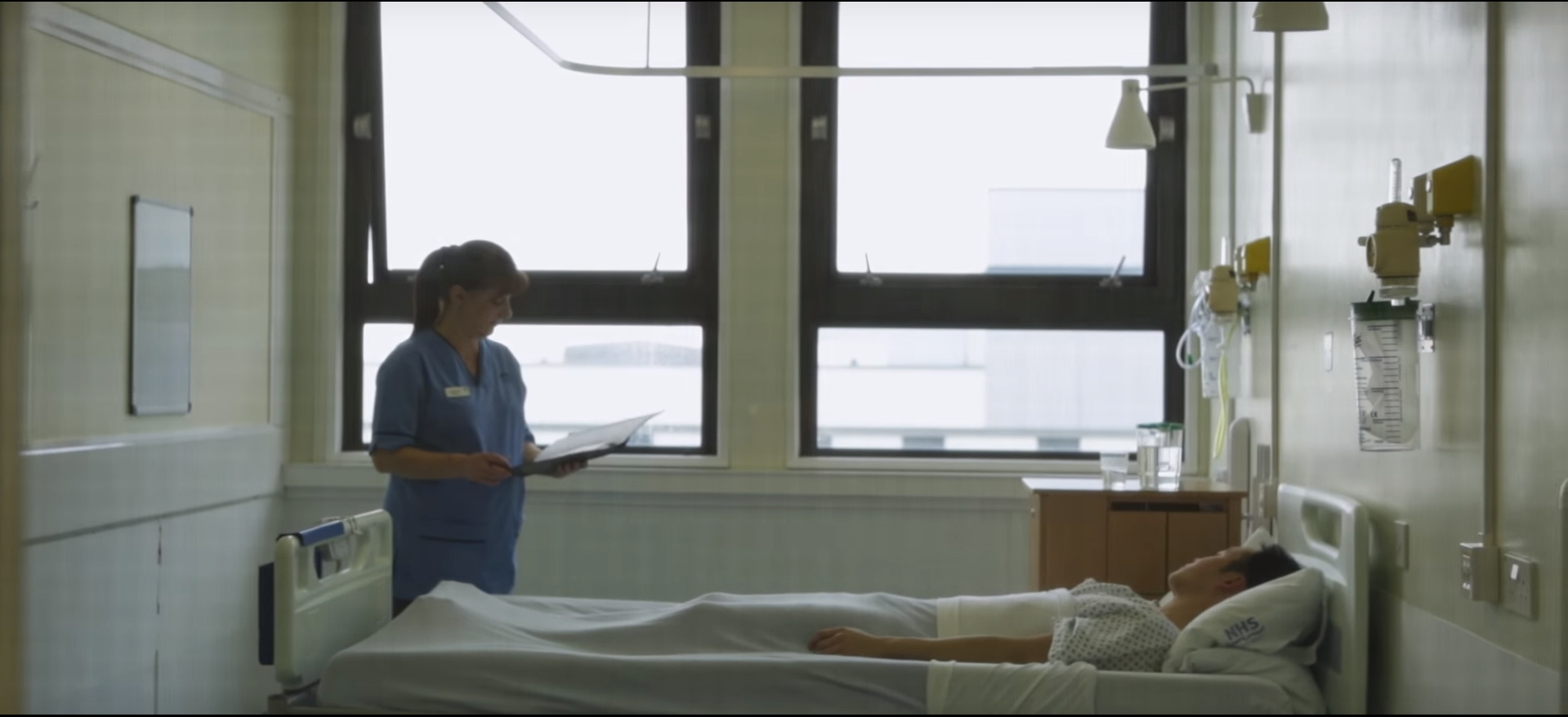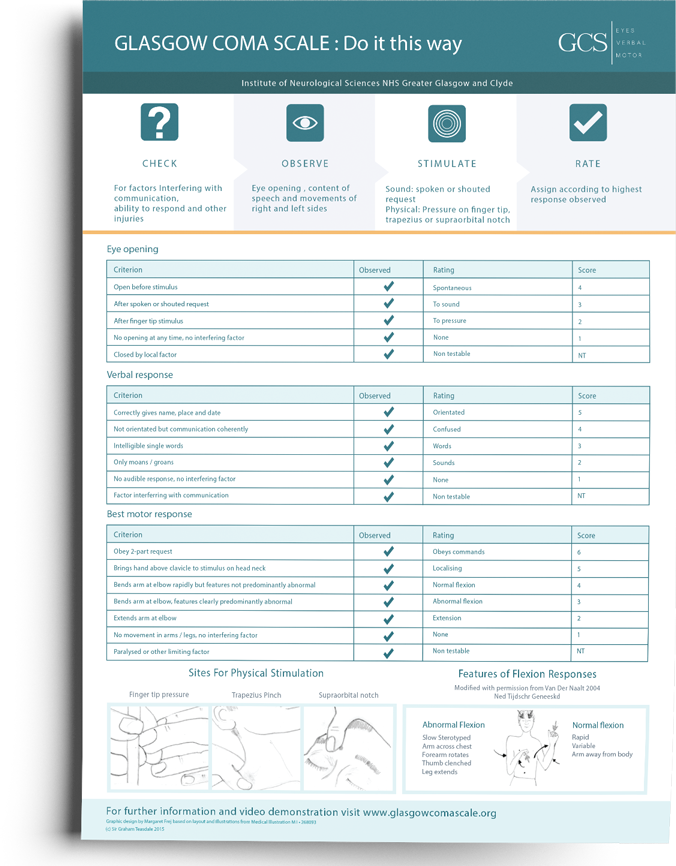Eye opening

- Spontaneous
- To sound
- To pressure
- None
Verbal response

- Orientated
- Confused
- Words
- Sounds
- None
Motor response

- Obey commands
- Localising
- Normal flexion
- Abnormal flexion
- Extension
- None
Recording GCS

Recording the Glasgow Coma Scale is important to observe and communicate trends in a patient’s condition.
GCS - Do it this way
The modern structured approach to assessment of the Glasgow Coma Scale improves accuracy, reliability and communication.
Read the instructions below to learn more.
Download the Assessment Aid to this new structured approach.
The Structured Assessment
Glasgow Coma Scale Assessment Aid available as PDF download in multiple languages
Click the button below:
Identify any factors that might interfere with your assessment.
Observe for spontaneous behaviours in any of the three components of the GCS.
Verbal and physical stimuli will be needed in patients without spontaneous behaviours.
Judge observed response against presence or absence of defined criteria.


